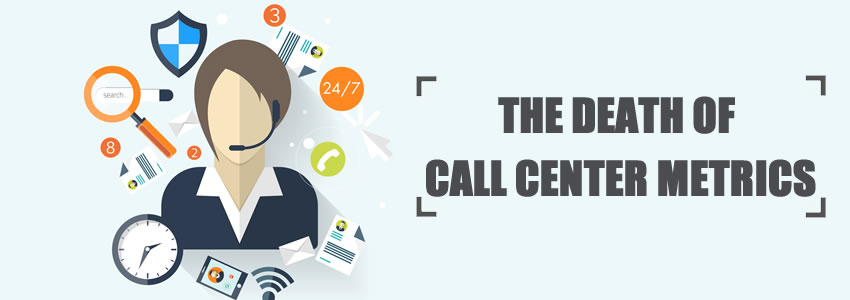IT MANAGED SERVICES & SOLUTIONS

Customer service is a key component to the success and reputation of most any business. As loyal customers measure the quality of a company’s customer service by rating its call center agents and operations, businesses by and large use metrics to measure call center performance. Even though we know the number of calls answered, how long an average call takes and how quickly a call is resolved, these metrics are only measuring part of the modern call center.
Now, businesses are identifying new metrics that measure the overall business value of the call center or service desk in addition to its performance, factoring in the customer's perspective to improve problem-solving and enhance customer relations. What are effective next-generation IT service metrics and how do companies transition to them? First, a little background.
To understand the service desk concept, it’s helpful to realize that a company’s IT department is what I call “the baby” of corporate shared services. Information Technology’s siblings like Accounting, Sales and Human Resources (HR) have been part of an organization’s business model far longer than IT, already establishing themselves as contributors to the bottom line in a number of different ways.
In the late seventies, service desk emerges as an extension of overloaded IT departments in need of additional personnel who could provide a quick response to any incidents – when an end user (EU) calls in with questions, concerns and problems that IT needs to fix, such as undefined error messages, a broken piece of hardware, non-functioning software or something like, "I can't get online."
In the beginning, Service Desk 1.0 functions as a glorified answering service for emergency help with technology issues. Traditional call center metrics provide operational data:
Businesses are most concerned with assuring end users that someone is there to answer their calls and relay their message to an expert who could actually resolve the issue (i.e., ticket). An EU wouldn’t expect resolution from service desk agents. By the end of the nineties though, call centers evolve to Service Desk 2.0 as metrics also rise up to measure:
At this stage, metrics are also measuring the competency of service desk personnel to resolve tickets, rather than simply transferring tickets to the care of IT engineers for the answer. Businesses now want the service desk to get users up and running quickly, with minimal effort on the end user’s part.
With the advent of Service Desk 3.0, metrics begin to provide data that helps prevent end user issues and to measure the effectiveness of the self-service catalog for end users to resolve tickets on their own without ever having to pick up the phone. Measurement strategy starts to revolve around connecting the data derived to the business decision-making process.
It's only been in the past five years that companies are looking for real business value metrics around Service Desk 3.0. Whereas Sales can show increased revenue and margins, Accounting can show reduced write-offs and HR can show a reduction is benefit cost and legal action, Service Desk needs to show justified return on investment, leveraging data to:
Examples of Next-Generation IT Service Metrics
To integrate a balanced scorecard across all business units, smart businesses will utilize their service level objectives (SLOs) to create meaningful service level agreements (SLAs). If the service desk is going to be the single point of contact (SPOC) that has total ticket ownership (TTO), connecting incident and change data, the service desk will have to commit to being able to provide a consistent level of service to end users. I would encourage service desk personnel to take a risk and commit to SLA's through the user base -which is a lot more powerful and it will give them a lot more credit.
Multi-dimensional data allows Service Desk 3.0 to essentially speed up the process of issue resolution by cross referencing all measurable data from multiple systems and resolver groups, publishing a data directory of the findings and generating standardized reports. This way, everybody knows what they're measuring at the same time.
Today’s savvy CIO needs to be asking this question: "How much are we contributing to the business bottom line?"
For true business success, it is essential to connect your IT department and the metrics that you use to measure it to the goals, the direction and the business focus of generating profit for your company. Other meaningful points of discussion include: